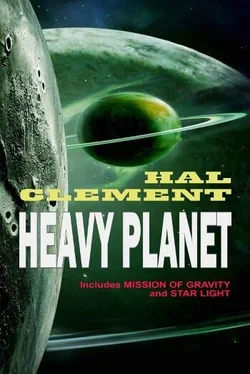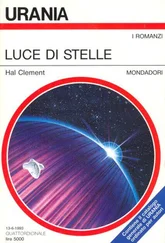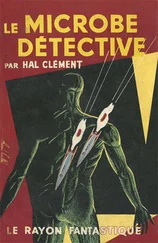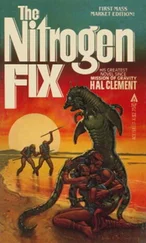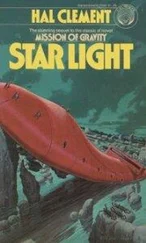“Yes, sir,” the two replied in unison, and were gone. The hours passed. The main lock was freed and opened, and nearly all the material to be taken was outside when a call came from above. The communicator which had been in the laboratory was now outside, so Dondragmer could be reached directly. Benj was still the speaker. “Captain, Stakendee reports that the stream he is following is getting noticeably broader and swifter, and that the clouds are becoming rain. I’ve told him to start back, on my own responsibility.” The captain looked up at the still cloudless sky, then westward toward the place where Stakendee’s fog might have shown if it had been daylight. “Thanks, Benj. That’s what I would have ordered. We’re leaving the Kwembly right now before the stream gets too big to cross with the equipment. I have lashed the communicator down to the bridge and will leave the lights on as Mr. McDevitt requested. We’ll hope you can tell us that it’s safe to come back, before too long. Please report this to Barlennan, and tell him that we will watch as carefully as possible for the natives; if, as he seems to be suggesting, they are using Kabremm as a means of getting in touch with us, I will do my best to set up cooperative relations with them. Remember, I haven’t seen Kabremm myself yet, and you haven’t mentioned him since the first time, so I’m entirely in the dark about his status so far. “Be sure to keep me informed of Barlennan’s thoughts and plans, as far as you can; I’ll do the same from here, but things may happen too quickly for any possible advance warning. Watch your screens. That’s all for now; we’re starting.” The captain uttered a resonant hoot which, fortunately for human ears, was not faithfully amplified by the set. The Mesklinites fell into rough line, and within two minutes were gone from the field of view of the bridge communicator. The other set was being borne near the tail of the line, so the screen far above showed the string of lights bobbing in front of it. Little else could be seen. The nearest sailors, those within two or three yards of the lens, could be made out in reasonable detail as they wound among the boulders with their burdens, but that was all. The line could have been flanked on both sides twenty feet away by a legion of natives, without any human being the wiser. Aucoin was neither the first nor the last to curse Dhrawn’s 1500-hour rotation period; there were still over six hundred hours to go before the feeble daylight from Lalande 21185 would return. The stream was still small when the group splashed through it, though Stakendee’s set a few miles west had confirmed the report that it was growing. Benj, noticing this, suggested that the small party also cross so that its members could meet the main body on the other side of the valley. Fortunately he made this suggestion to Dondragmer before acting on his own; the captain, remembering the two messengers he had sent upstream, hastily advised that the crossing be postponed as long as possible so that Stakendee and his men could compare more accurately the size of the stream with what it had been when they had passed the same area earlier. Benj and Easy accepted this excuse. Ib Hoffman, quite aware that the foot party was carrying no time measuring devices and could give no meaningful report on the rate of change, was startled for a few seconds. Then he smiled, privately. For minutes, which stretched into one hour and then another, there was little to watch. The crew reached and climbed the bare rock sides of the valley at the spot where the first load of equipment had been left, and set about constructing something which might have been called either a camp or a town. Life-support equipment had first priority, of course. It would be many hours yet before any air-suits would need recharging, but the time would come. For organisms as profligate of energy as the Mesklinites, food was also a matter of immediate concern. They set about it quickly and efficiently; Dondragmer, like the rest of the cruiser captains, had given plenty of advance thought to the problem of abandoning ship. Stakendee’s group finally crossed the river and, somewhat later, reached the encampment. The crossing had been approved by Dondragmer after he had received through Benj a message which contained, quite incidentally, the name of one of the messengers the captain had sent from the Kwembly. Consequently no one, either member of the Kwembly crew or human being, was able to watch the growth of the ammonia-water stream. It would have been an interesting sight. At first, as the witnesses had reported, it was little more than a trickle running from hollow to hollow on the bare rock in the higher reaches of the river bed, men winding among the boulders lower down. As the drops of liquid in the fog coalesced and settled out more rapidly, tiny new tributaries began to feed into the main stream from the sides, and the stream itself grew deeper and faster. On the bare rock it meandered more violently, overflowing the basins which had originally contained it. Here and there it froze temporarily, as water, supplied by the frozen puddles upstream, and ammonia from the fog, shifted about the eutectic, which was liquid at the local temperature: about 174 degrees on the human Kelvin scale, roughly 71 on that used by the Mesklinite scientists. Among the boulders, as it neared the Kwembly, it accumulated more and more water ice, and the progress grew more complicated. The ammonia dissolved water for a time, the mixture flowing away as the composition entered the liquid range. Then the stream would stop and build up, as Benj had pictured it, like hot wax on a candle, solidifying temporarily from addition of ammonia. Then it would slump away again as underlying ice reacted with the mixture. It finally reached the hole which had been melted along the Kwembly ’s starboard side, where the human beings could watch once more. By this time the “stream” was a complex network of alternate liquid, solid, and slush perhaps two miles across. The solid, however, was losing out. While there were still no clouds this far downstream, the air was nearly saturated with ammonia: saturated, that is, with respect to a pure liquid-ammonia surface. The ammonia vapor pressure needed for equilibrium over an ammonia-water mixture is lower; so condensation was taking place on the mostly water and low-ammonia ice. As it reached the appropriate composition for liquefaction its surface flowed away and exposed more solid to the vapor. The liquid tended to solidify again as it absorbed still more ammonia vapor, but its motion also gave it access to more water ice. The situation was a little different in the space under the Kwembly ’s hull, but not greatly so. Where liquid touched ice the latter dissolved and slush appeared; but more ammonia diffusing from the free surface at the side melted it again. Slowly, slowly, minute after minute, the grip of the ice on the huge vehicle relaxed so gently that neither the human beings watching with fascination from above nor the two Mesklinites waiting in their dark refuge could detect the change, and the hull floated free. By now the entire river bed was liquid, with a few surviving patches of slush. Gently, very unlike the flood of a hundred hours or so before when three million square miles of water-snow had been touched by the first ammonia fog of the advancing season, a current began to develop. Imperceptibly to all concerned, the Kwembly moved with that current: imperceptibly because there was no relative motion to catch the eyes of the human beings, and no rocking or pitching to be felt by the hidden Mesklinites. The seasonal river, which drains the great plateau where the Kwembly had been caught, slices through a range of hills, for Dhrawn respectable mountains; the range extends some four thousand miles northwest-southeast. The Kwembly had gone parallel to this range for most of its length before the flood. Dondragmer, his helmsmen, his air scouts, and indeed most of the crew had been quite aware of the gentle elevation to their left, sometimes near enough to be seen from the bridge and sometimes only a pilot’s report. The flood had carried the cruiser through a pass near the southeastern end of this range to the somewhat lower and rougher regions close to the edge of Low Alpha before she had grounded. This first flood was a rough, rather hesitant beginning of the new season as Dhrawn approached its feeble sun and the latitude of the sub-stellar belt shifted. The second was the real thing, which would only end when the whole snow plain was drained, more than an Earth year later. The Kwembly ’s first motions were smooth and gentle because she was melted free so slowly; then they were smooth and gentle because the liquid supporting her was syrupy with suspended crystals; finally, with the stream fully liquid and up to speed, it was smooth because it was broad and deep. Beetchermarlf and Takoorch may have been slightly dazed by decreasing hydrogen pressure, but even if they had been fully alert the slight motions of the Kwembly ’s hull would have been masked by their own shifting on the flexible surface that supported them. Low Alpha is not the hottest region on Dhrawn, but the zone-melting effects which tend to concentrate any planet?s radioactive elements have warmed it to around the melting point of water ice in many spots, over two hundred Kelvin degrees hotter than Lalande 21185 could manage unassisted. A human being could live with only modest artificial protection in the area, if it were not for the gravity and pressure. The really hot area, Low Beta, is forty thousand miles to the north; it is Dhrawn?s major climate-control feature. The Kwemhly ’s drift was carrying it into regions of rising temperature, which kept the river fluid even though it was now losing ammonia to the air. The course of the stream was almost entirely controlled by the topography, rather than the other way around; the river was geologically too young to have altered the landscape greatly by its own action. Also, much of the exposed surface of the planet in this area was bed rock, igneous and hard, rather than a covering of loose sediment in which a stream could have its own way. About three hundred miles from the point at which she had been abandoned, the Kwembly was borne into a broad, shallow lake. She promptly but gently ran aground on the soft mud delta where the river fed into it. The great hull naturally deflected the currents around it, and set them to digging a new channel alongside. After about half an hour she tilted sideways and slid off into the new channel, righting herself as she floated free. It was the rocking associated with this last liberation which caught the attention of the helmsmen and induced them to come out for a look around.
Читать дальше
